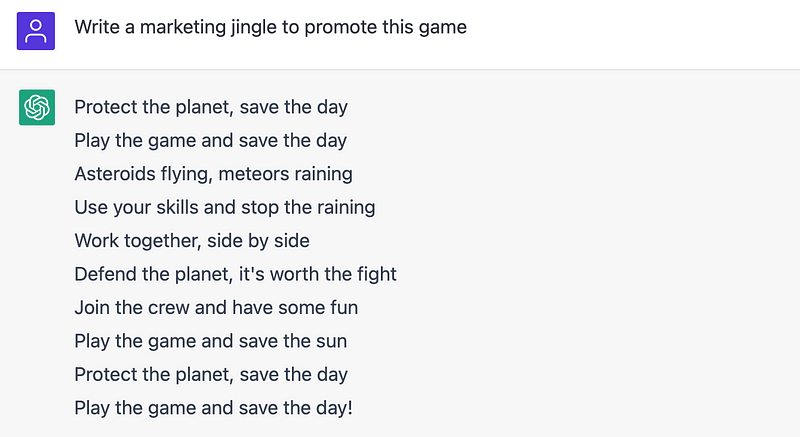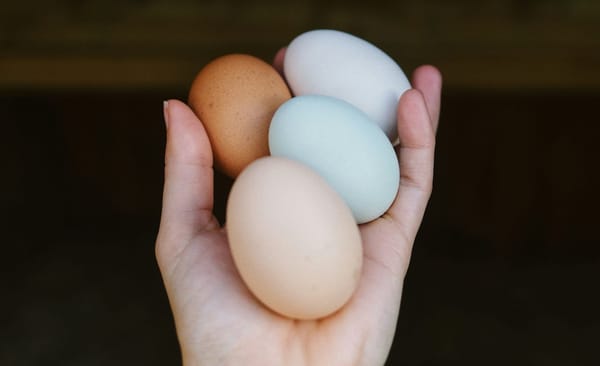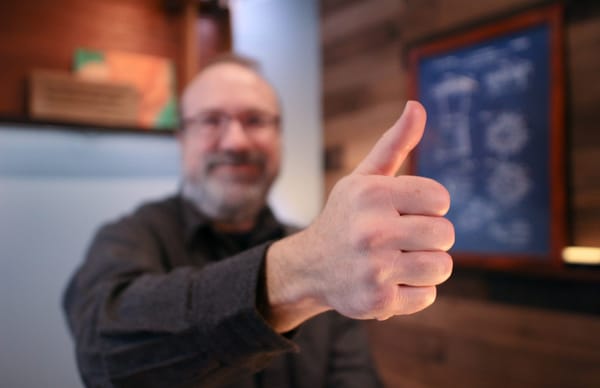How I creative directed ChatGPT to write “The Final Stand”
Creative directing an AI is like decorating a wedding cake with one eye closed while looking through a mirror.

Our first expectation with a new piece of software is to push a few buttons and pop out polished perfection. I remember when Google was still new. It was frustrating to get weird results from typing a few keywords when searching a complex subject. You had to learn “how to Google” and distill your intent down to the most poignant terms in order to get something more useful.
This is similar with ChatGPT.
Broad and general commands will produce very interesting, but non-descript responses. It’s fascinating to see how much information it has at its disposal, but it lacks context with its user. Ironically, it doesn’t know you like a friend or colleague knows you. In those relationships, you can mention concepts in shorthand and the meaning is not only communicated and understood, but their response builds on it proactively.
ChatGPT does have the ability to “remember” concepts earlier in the conversation. This is critical to its usefulness and its ability to be a collaborator in creative activities. The system that “forgets” the last thing you just said is like, well, a search engine.
So, instead of asking ChatGPT to, “Write a science fiction story about a meteor shower,” I took more of a Creative Director approach and started with character development.
I was surprised how detailed this was, especially since I didn’t go into detail whether this was science fiction, what year it was, or any other storytelling elements. It seemed to be based in some real-world characteristics of a leader, and that was good for the believability of the story.
I thought to take this character development and animate it.

My next surprise was that it took the narrative into the first-person perspective. I assumed in my mind it would be third-person, but why? Without guidance, first-person was just as legitimate as any.
I thought I should get more specific with what I wanted.

This was good. I could narrow in on a particular part of the story and give ChatGPT more parameters to get more focused results.
I then turned to the personalities of the story. Looking back, I would have started with more detailed characters so they could have been incorporated in the narrative more naturally.

Since ChatGPT is good at mashups, I wanted to see how it would blend these disparate attributes together. Besides, disparate attributes is what makes something interesting.
Since that worked well, I wanted to get more details on the other bridge cre members. Since I didn’t want to get type in a request for each one, I thought to batch them together.
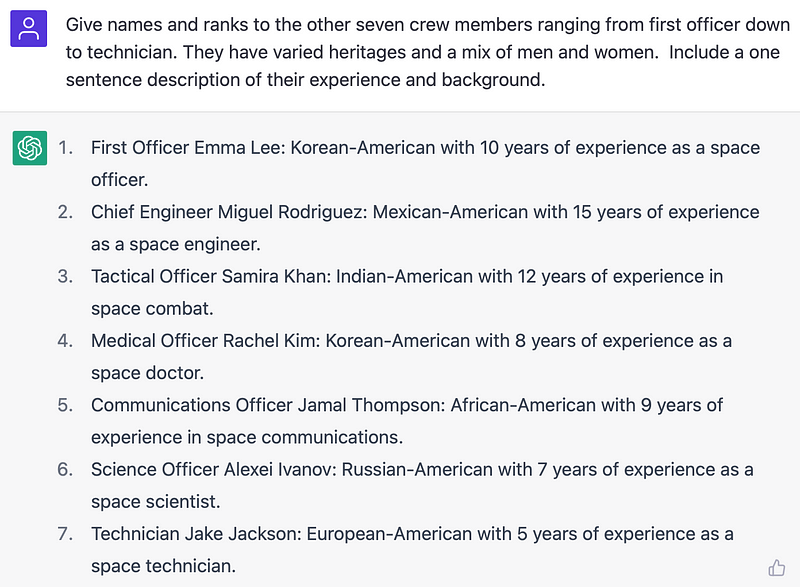
Nice! This reminded me of the days when I would generate non-playing characters for my Star Trek role playing games.
However, they still needed more depth.
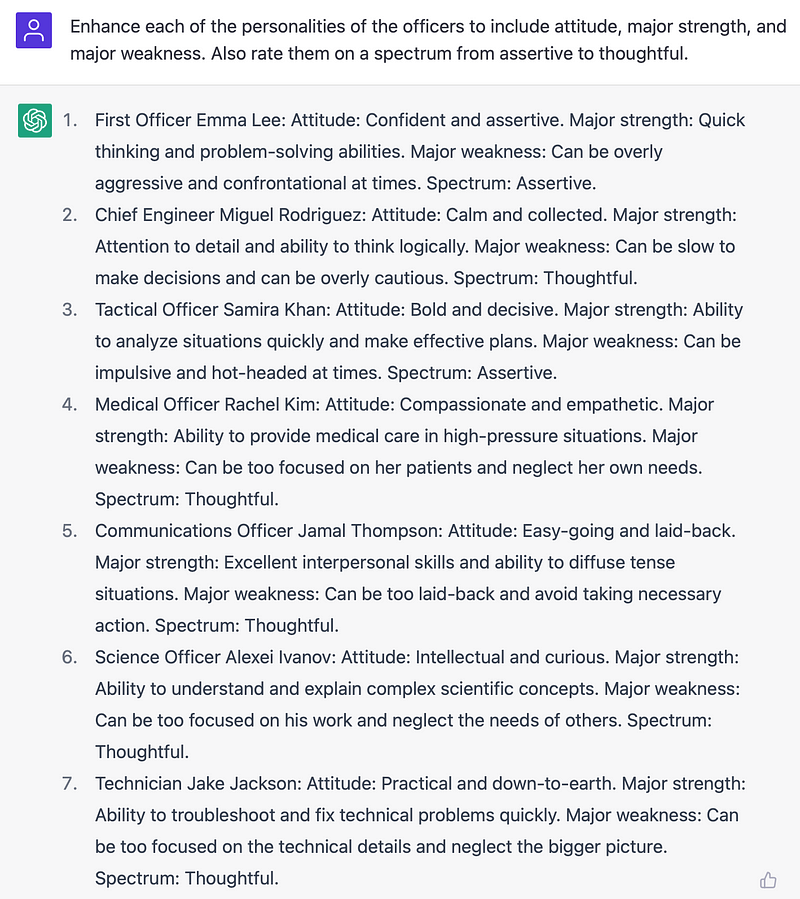
I really liked these results, yet I felt like it was straight from a corporate personality test. Of course, these traits are commonly found together, so it didn’t feel too contrived.
What follows are my prompts which mirror the narrative. The only edits I made in the story were to break up the scene between the bridge and the weapons room, some tenses and removing a redundant paragraph near the end.









I felt like I truly directed the plot. I dipped into the details enough to set a direction, but ChatGPT created all the intermediate details. I was able to go back and expand sections or inject a twist where I wanted.
This is a far cry from ChatGPT generating these plot points and twists. In fact, it’s not capable of doing that at this point. It simply doesn’t have an imagination to create the extent of the story limits or envision when an audience will expect a twist or not.
Of course, I asked it to come up with a title
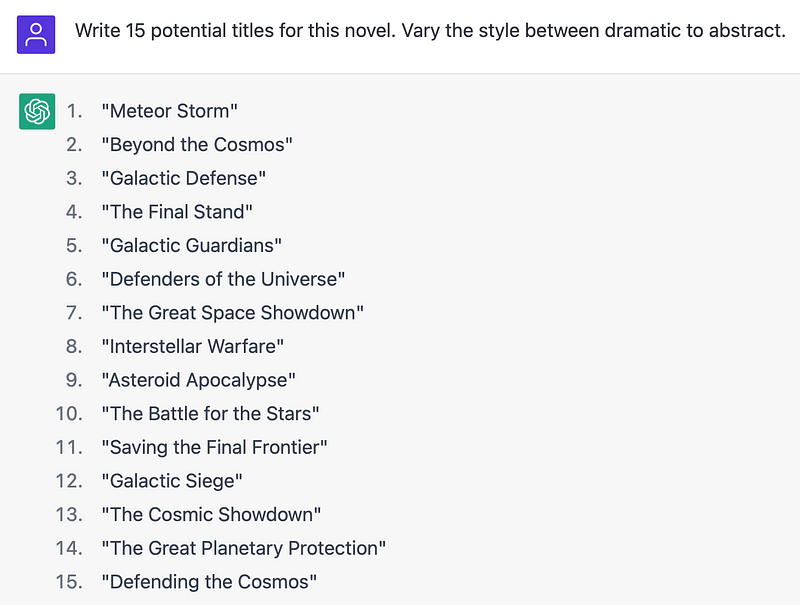
I chose #4 because it had double meaning: the Captain and crew’s standing between the meteors and protecting the planet as well as the tension between the Captain and Rodriguez for the solution to the situation.
Final thoughts?
Did ChatGPT and I write an award-winning short story? Not really, but maybe it could serve as the basis for writing well-rounded characters and deepening the plot.
My greatest takeaway is how interactive and creatively collaborative it felt directing ChatGPT. It could generate hundreds of thousands of variations if I would ask it, and each of those could prompt me to further explore the project.
The application extends far beyond creative writing, and applies to creativity in any field, such as mine in UX and Product Design.
What’s next?
After you creative direct an AI short story, what do you do next? Create the companion board game, of course!
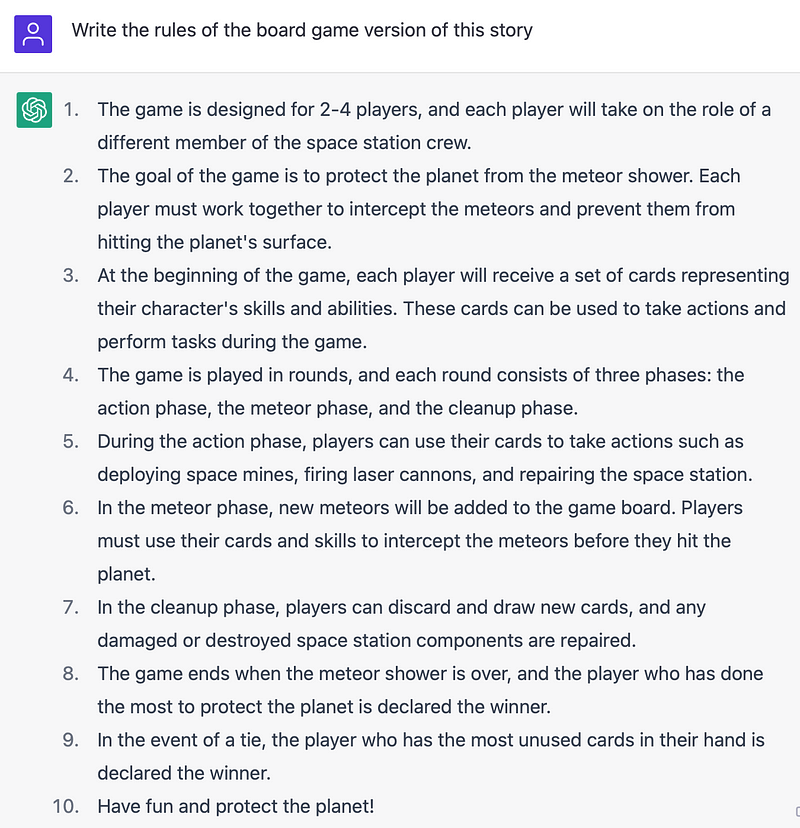
I didn’t take this any further, but the same technique could be used to flesh out these rules and generate details surrounding the skills and attributes, point systems, and so on.
You’ll know the game is available when you see this ad the next time you’re on YouTube:
